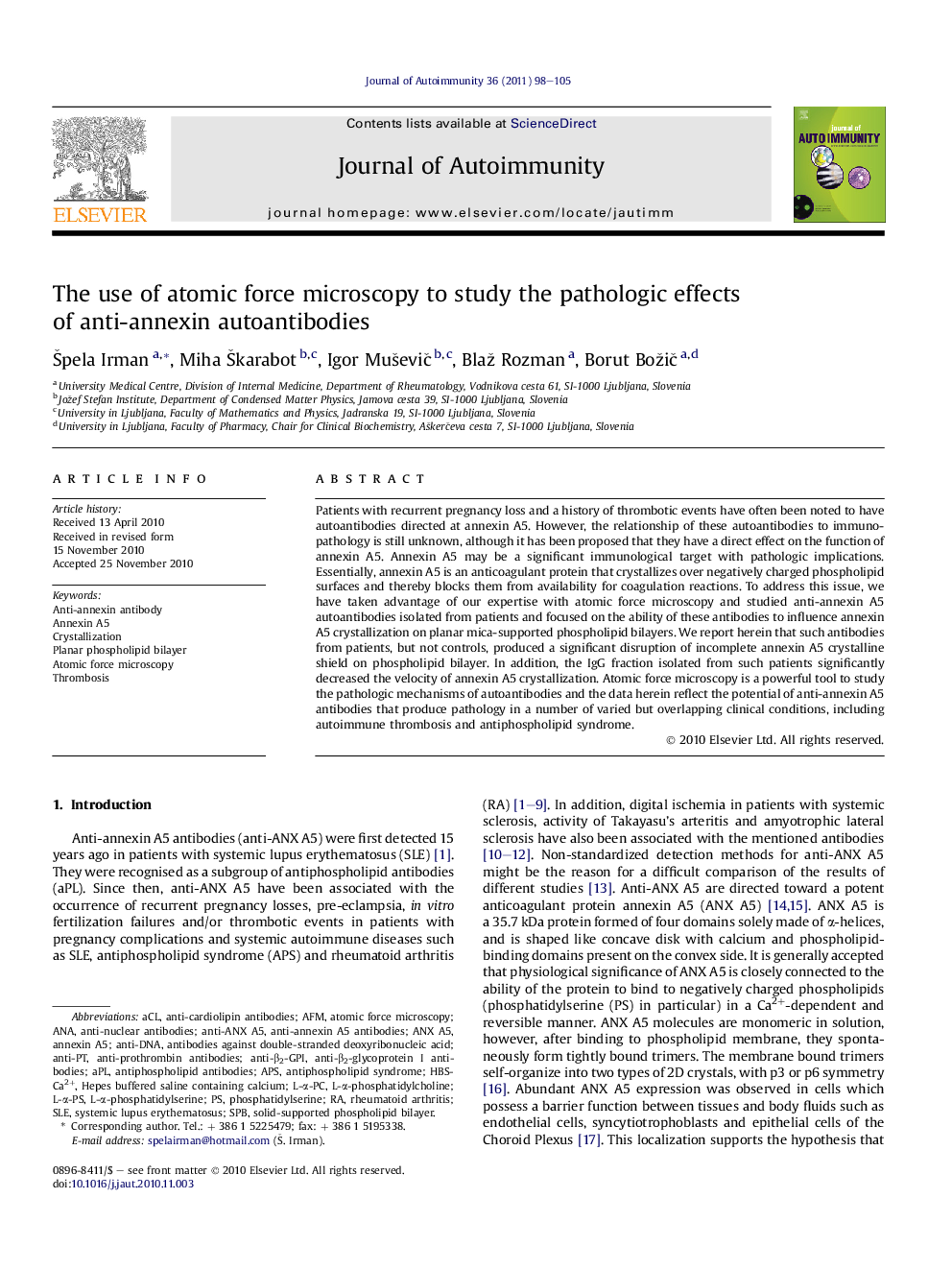| Article ID | Journal | Published Year | Pages | File Type |
|---|---|---|---|---|
| 3368086 | Journal of Autoimmunity | 2011 | 8 Pages |
Patients with recurrent pregnancy loss and a history of thrombotic events have often been noted to have autoantibodies directed at annexin A5. However, the relationship of these autoantibodies to immunopathology is still unknown, although it has been proposed that they have a direct effect on the function of annexin A5. Annexin A5 may be a significant immunological target with pathologic implications. Essentially, annexin A5 is an anticoagulant protein that crystallizes over negatively charged phospholipid surfaces and thereby blocks them from availability for coagulation reactions. To address this issue, we have taken advantage of our expertise with atomic force microscopy and studied anti-annexin A5 autoantibodies isolated from patients and focused on the ability of these antibodies to influence annexin A5 crystallization on planar mica-supported phospholipid bilayers. We report herein that such antibodies from patients, but not controls, produced a significant disruption of incomplete annexin A5 crystalline shield on phospholipid bilayer. In addition, the IgG fraction isolated from such patients significantly decreased the velocity of annexin A5 crystallization. Atomic force microscopy is a powerful tool to study the pathologic mechanisms of autoantibodies and the data herein reflect the potential of anti-annexin A5 antibodies that produce pathology in a number of varied but overlapping clinical conditions, including autoimmune thrombosis and antiphospholipid syndrome.
